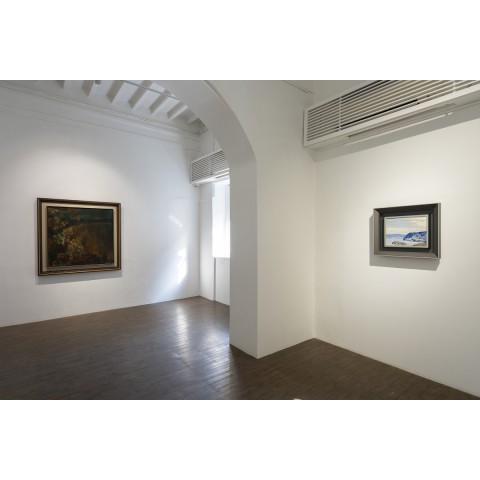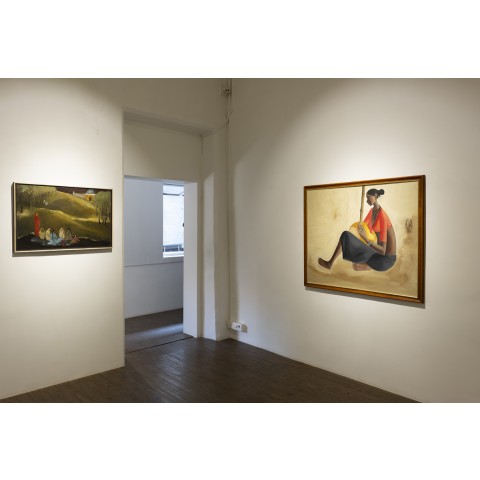
OMINOUS IDYLLS: GROUP SHOW
March 14 - April 13 , 2024
Ominous Idylls presents some of the foremost luminaries of South Asian modernism working at or near the top of their form. In addition to three founder members of the famed Progressive Artists Group, the show includes Indian, Bangladeshi and Sri Lankan representation as well as a tranquil canvas by the Russian painter, explorer and mystic Nicholas Roerich who had deep ties with India.
The self-contradictory title signals the range of moods evident in this exhibition of cityscapes and landscapes, covering a sliding scale from idealized lyricism to brooding menace. Paramjit Singh represents the Arcadian end of the scale in a rare early work of women enjoying a picnic within an undulating garden. Sri Lanka’s Senaka Senanayake turns the labour of female tea pickers into a study of sinuous figuration, J.A. Lalkaka balances the bustle of Bombay’s Crawford Market with the majesty of the site’s architecture, and B. Prabha’s Adivasi Girl appears close to the soil as well as her musical vocation. Sadanand Bakre produces a playful abstract composition that contains two sections that could be paintings in themselves. These two sections, in turn, hint at architectural form, conjuring a landscape with houses, horizon and sky.
KCS Panicker’s portrayal of a boat passing under a bridge at night is more restrained in its atmosphere and ambiguous in its narrative than the images described so far. Ambiguity is also a feature of Zarina Hashmi’s Wall and the Bangladeshi master Mohammad Kibria’s untitled abstract canvas which toggles expertly between flatness and recession.
Ram Kumar’s meditative untitled landscape is almost monochromatic grey-green with patches of black and white. In contrast, Akbar Padamsee’s work possesses a smouldering intensity enhanced by his characteristic impasto brushwork.
S.H. Raza Village depicting a cluster of homes on a French hillside typifies his work from the mid-1950s, the instability of forms presaging the artist’s turn to abstraction in the succeeding decade. F.N. Souza’s untitled canvas of houses seen through leafless trees brings to the fore a sense of foreboding lying below the surface in a number of other paintings in the show. The birds in flight echo those in Van Gogh’s Wheatfield with Crows and the mood feels like something out of Edgar Allen Poe. Yet, a narrow reading does injustice to this composition, as to many others in the exhibition endowed with a complexity that rewards repeated viewing.
Images

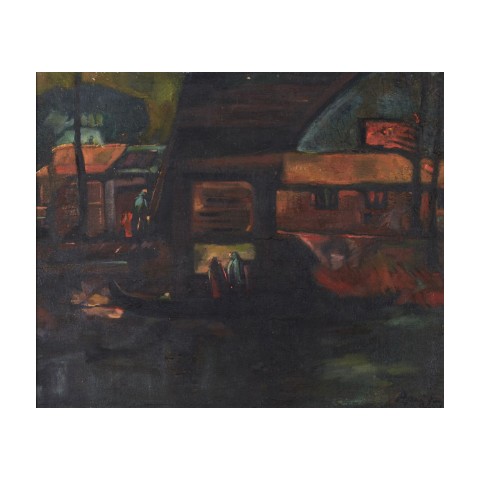
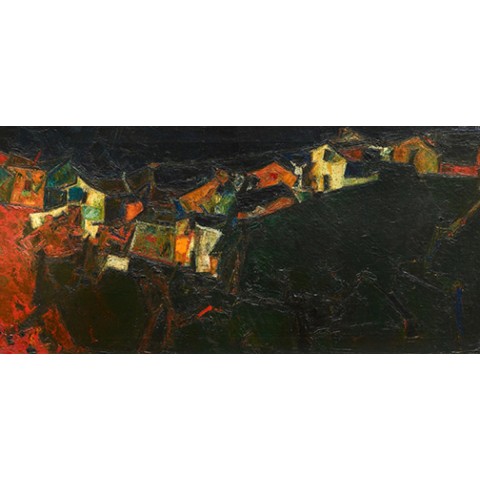
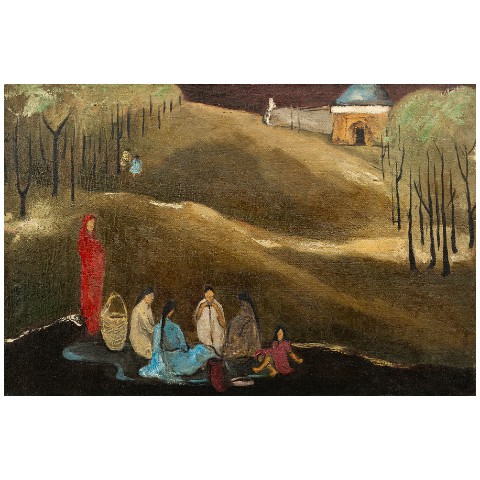
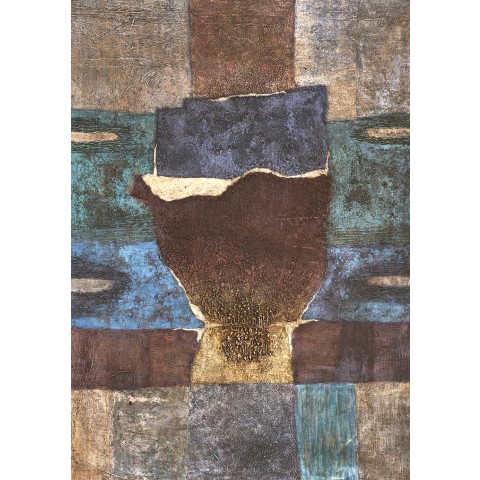
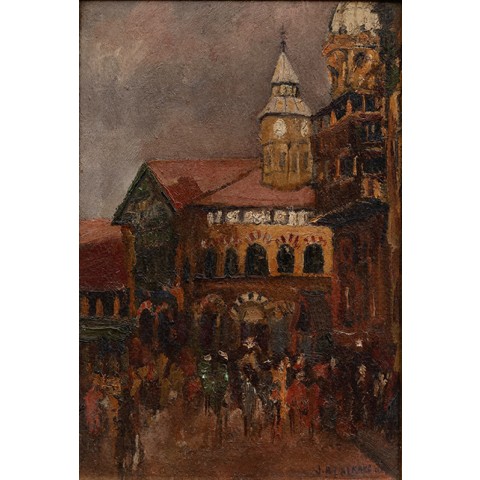
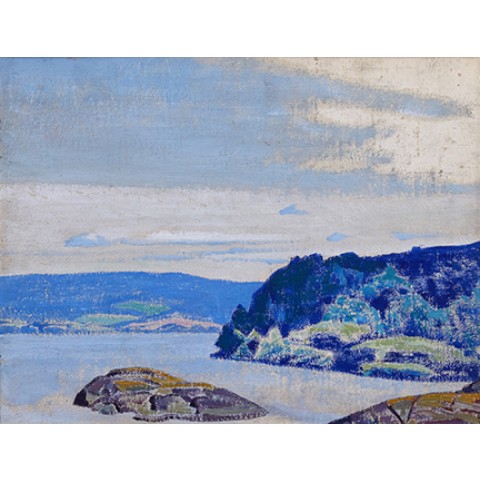
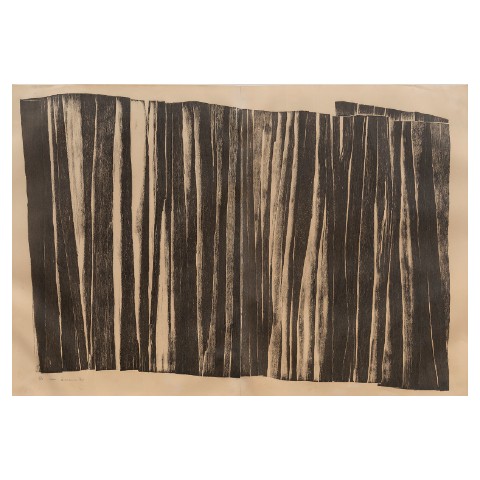
Installation
